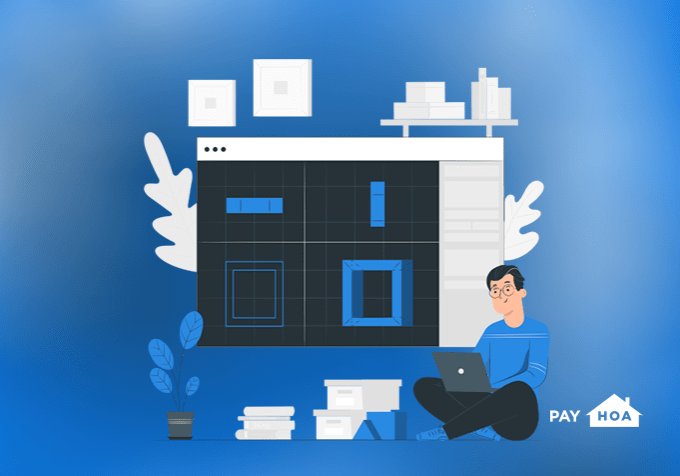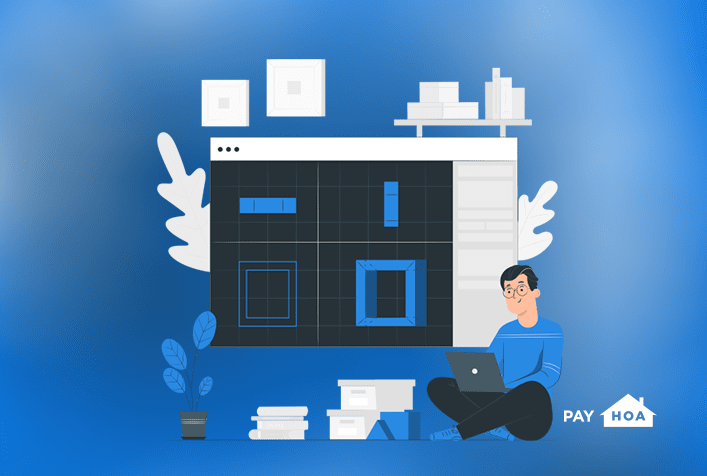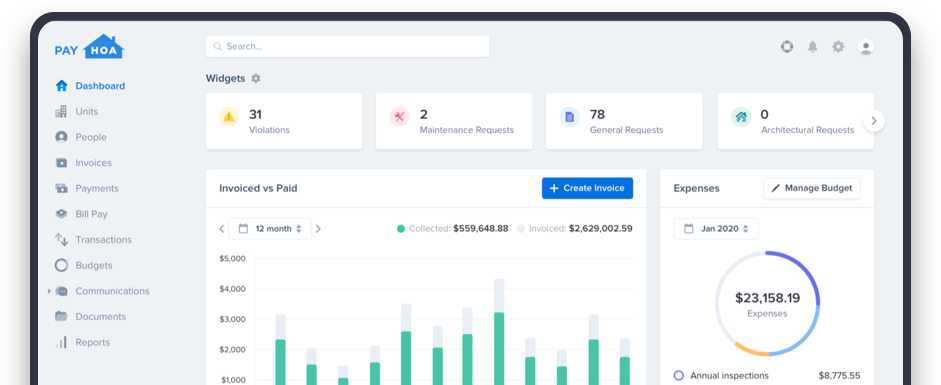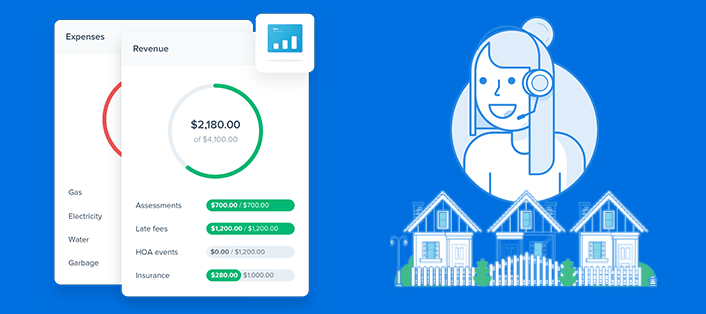 Jesse Hitt • 07 May 2021 • 6 min read
Jesse Hitt • 07 May 2021 • 6 min readFirst Steps For New Self Managed HOAs


Transitioning from a third party to a self managed HOA can at first seem daunting and may require some trial and error.
However, if you’re a board volunteer thinking of taking on the financial management and other day-to-day operations in your community, there’s no reason to feel intimidated—whether you’re managing 10 or 100 or more units.
There are many reasons a homeowners association may decide to self-manage their properties. Perhaps your current management company is a bad fit for the community. Your board may want more control over running the neighborhood. Or else the sizable cost of a third-party property manager might outweigh the benefits they’re providing.
The reality is that many small- and medium-sized associations successfully self-manage. In fact, the Community Associations Institute estimates that up to 40% of HOAs choose self-management.
With the right tools and strategies, transitioning from third-party management to a self managed HOA has long-term benefits and a potential savings of tens of thousands of dollars in unit fees and other management costs.
For the volunteer stepping into a new treasurer role for their board, here are some important first steps when implementing a self-managed HOA.
Table of Contents
1. Secure and Organize Your HOA’s Financial Records and Documents
2. Set Goals and Define Risks and Boundaries
3. Determine When to Consult Professionals
4. Invest in Self Managed HOA Software
Secure and Organize Your HOA’s Financial Records and Documents
Property managers often control a community’s financial and banking data, as well as other important records and documents. It’s crucial to regain this data once you part ways with your management company. Then you must input this information into a well-organized, centralized system of accounting and record keeping.
Self managed HOAs need to set a budget or adjust the budget set by your management company. You’ll also need a system to track financial information such as income and expenses, as well as implement a way to track KPIs and financial goals. Clear and consistent financial management helps provide more transparency to residents and other stakeholders.
Beyond accounting, self managed HOAs need to organize a system for all management documents and records such as:
· Dues collections and invoicing
· Violations tracking, reporting, and fee collections
· Maintenance requests
· Records for the community’s units and residents
· Vendor contracts and information
· Communications records
Set Goals and Define Risks and Boundaries

Establish the reasons you left your management company and define the short- and long-term goals you want to accomplish by switching to self-management. How could the money that would’ve been used to pay unit fees be reinvested in the community? Are there immediate needs such as architectural maintenance or upgrades, or other improvements that could add value? What are the strengths of your team, and what are some challenges you face?
It’s also important to understand the risks and responsibilities you’ll face now that there’s no management company to handle liability concerns.
Take time to review your governing documents, such as the articles of incorporation, bylaws, Declaration of Covenants, CC&Rs, and other rules and regulations. Identify potential liabilities and risks. Also, if your management company was previously in charge of obtaining property insurance, assessing your coverage is something you must factor into your transition.
Determine When to Consult Professionals
HOA self-management doesn’t mean your board has to handle every task on its own. While volunteer board members can handle most of the operational tasks of managing their neighborhood, they may not have the expertise or availability to oversee some of the more complex bigger-picture responsibilities.
A self managed HOA community may choose to outsource certain management tasks to professionals. Here are a few examples.
A legal team can help advise policies to avoid liability concerns. They can also help with filing legal documents such as liens, foreclosures, representing you for any legal proceedings, and updating association documents. Some states and regions have more regulations than others around HOAs.
Your CPA can handle tax filings and financial audits.
A security company can augment your technology and fencing by providing on-site security personnel. These trained personnel can patrol and guard a community’s spaces and amenities, as well as monitor entry into the community at the gate or front desk.
Invest in Self Managed HOA Software

with HOA accounting software.
To understand why it’s important to invest in the right HOA accounting software, try visualizing your daily tasks managing your community. Then scope out the time and resources it takes to do each. How much time do volunteers spend mailing invoices and other documents, depositing dues checks, budgeting, tracking income and expenses, handling architectural or maintenance requests, tracking and enforcing rules violations, returning calls and emails, and managing vendor contracts?
Many self managed HOAs use spreadsheets or paper ledgers, collecting and depositing paper checks manually, or using other general-use accounting systems. These approaches still require an unnecessary amount of manual effort and create opportunities for user errors, incorrect and incomplete data, and other risks.
The right HOA accounting software platform gives you tools to centralize all your accounting and management needs in one streamlined, easy-to-use digital hub.
One major advantage of using HOA software is the ability to optimize your accounting processes and manage invoicing and dues collection. Standard accounting software doesn’t allow for bulk, automated billing for all the units in your community, whereas an HOA software like PayHOA is uniquely designed for this task. A software tool syncs to your bank account ledgers, process digital dues payments, produce customized financial reports, and mail physical invoices.

HOA software also integrates other management workflows such as:
· Tracking and managing violations and maintenance requests
· Storing unit, resident, and vendor data in a centralized repository
· Multi-channel communications like bulk texting, email, surveys, and automated phone messaging.
· Integrated with a customized web page to more easily connect with current and potential residents.
· Homeowner portals for automated digital payments, payment history, communications, and updates.
HOA accounting software usually comes at a negligible price.
PayHOA offers a comprehensive software solution at a fraction of the cost of hiring a third-party management company. Our platform allows over 6,000 self-managed HOAs across the country to streamline their operations, increase efficiency and transparency, and mitigate risks. If you’re considering becoming a self-managed HOA, our team would love to help you take your first steps.
—
PayHOA offers an HOA management software solution for HOAs of any size or managerial priorities. To find out if PayHOA fits all your HOA management needs, try our software free for 30 days.
Share this article:
Enjoyed this Article? Try Another!
Simplify COA Tax Preparation with Condo Management Software
Key Takeaways Condo Management Software for Tax Prep and Filing COAs (Condo Owners Associations) are…
Bank Accounts, Funds, and Budget Items: What Does an HOA Need?
Key Takeaways: HOA Accounts and HOA Accounting If you’re involved in your homeowner association’s management,…
How Reddenwood Used Software to Transition to Self-Management
Summary When the Reddenwood Maintenance Corporation voted to replace their HOA Board two years ago,…


